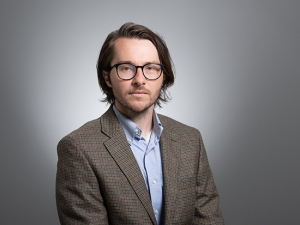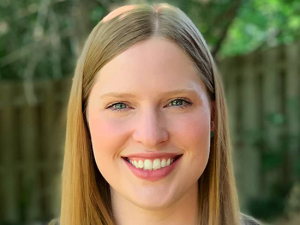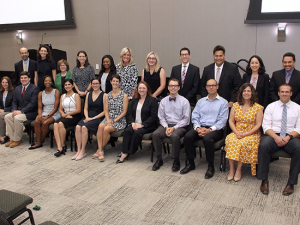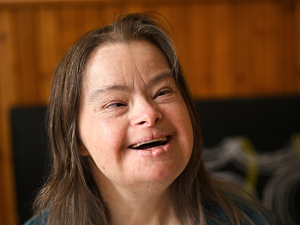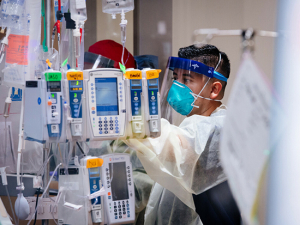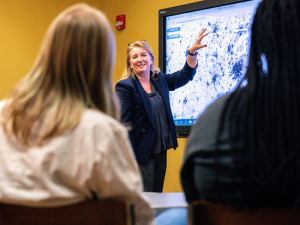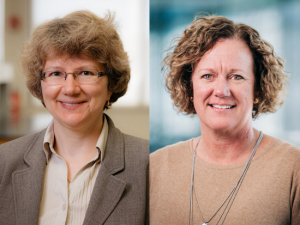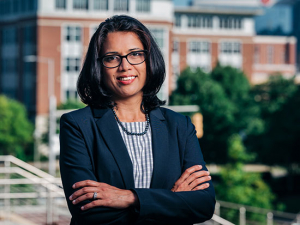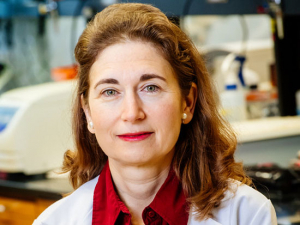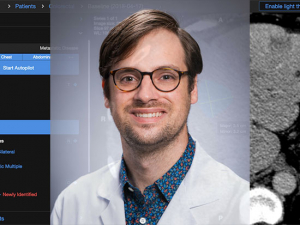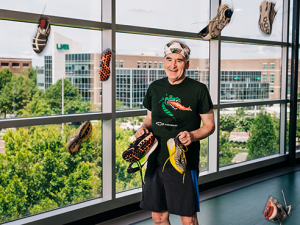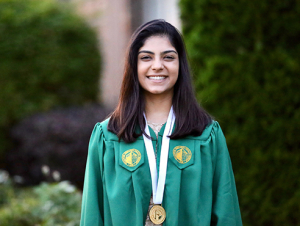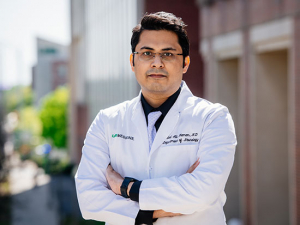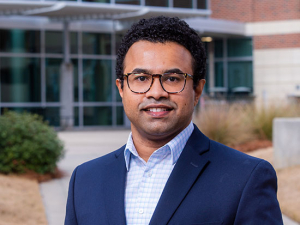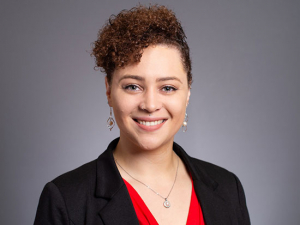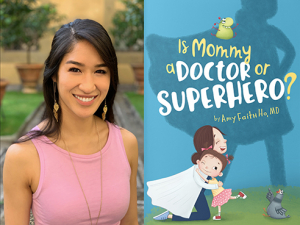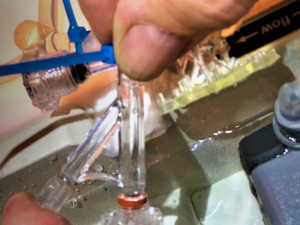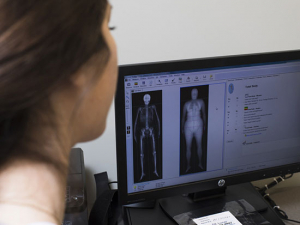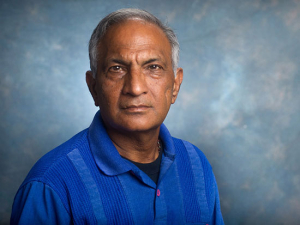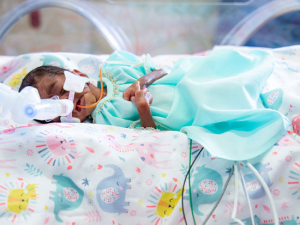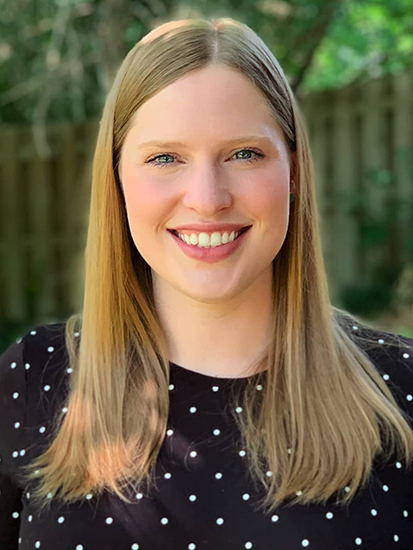 With a grant from the National Endowment for the Humanities, Lindsay Brainard, Ph.D., will complete a series of papers on AI and creativity and present her work at the World Congress of Philosophy in Rome this August.At some point, the steady drumbeat of triumphant claims from artificial intelligence companies such as OpenAI, Google and Anthropic can be overwhelming. If GPT–4o, Gemini 1.5 Pro and Claude 3 Opus are so smart, is there anything left where we — that is, humans — can excel?
With a grant from the National Endowment for the Humanities, Lindsay Brainard, Ph.D., will complete a series of papers on AI and creativity and present her work at the World Congress of Philosophy in Rome this August.At some point, the steady drumbeat of triumphant claims from artificial intelligence companies such as OpenAI, Google and Anthropic can be overwhelming. If GPT–4o, Gemini 1.5 Pro and Claude 3 Opus are so smart, is there anything left where we — that is, humans — can excel?
Number crunching and data analysis are one thing; but nearly instant AI-generated images, video and music threaten some of our most uniquely “human” tasks. A hotly debated new ad from Apple added fuel to the flames, showing a trumpet, piano, paint, stack of books and other human-operated creative tools being crushed by a hydraulic press to reveal the latest iPad. Actor Hugh Grant summed up many takes with his comment on X: “The destruction of the human experience. Courtesy of Silicon Valley.”
What is the future of human creativity?
Lindsay Brainard, Ph.D., assistant professor in the UAB Department of Philosophy, is tackling that question in a trilogy of academic papers. The first, titled “The Curious Case of Uncurious Creation,” was published in the journal Inquiry in September 2023. A second article is now under review for publication. She will work on the third this summer — then present her work at the World Congress of Philosophy in Rome, Italy, in August — thanks to a $6,000 grant from the National Endowment for the Humanities.
Brainard traces her interest in the philosophy of creativity to her dissertation work. In studying the use of computer simulations in science, she explored the ways in which scientific discoveries are creative. The arrival of OpenAI’s ChatGPT in late 2022 opened up fascinating new questions.
“We are faced with a dilemma: We must either concede that AI can make human creativity obsolete, or identify some value of human creativity that AI does not appear capable of achieving.”
“There are a lot of claims that these AI models are creative,” Brainard said. In her Inquiry paper, she quotes from OpenAI’s website, which describes its new GPT–4 model as “more creative and collaborative than ever before.” The paper “is my attempt to assess, is it really true? Are these models creative?” Brainard said. That, of course, depends on how you define “creative.” Is it the ability to generate things that are new and have value? ChatGPT could qualify. (Brainard asks the model to “write a sentence that has never been written before” and it does. The topic is unicorns.) Then again, an oyster can also create something new and valuable — a pearl — Brainard notes, quoting philosopher Berys Gaut.
What the oyster lacks, and what also is missing from current AI models, Brainard argues, is curiosity, defined as “a motivation to pursue epistemic goods,” she writes. (“Epistemic goods” are things like knowledge, truth and understanding.)
By these lights, humans are safe, for now. “Finally, I consider the question of whether these AI models stand to make human creativity in the arts and sciences obsolete, despite not being creative themselves,” Brainard writes in the abstract of her Inquiry paper. “I argue, optimistically, that this is unlikely.”
That is not to say that this conclusion will hold forever. “I’m not saying it is impossible,” she points out. “Just that today’s models do not meet the conditions for creativity.”
In her second paper on creativity and AI, Brainard raises another question: “Should we still be striving to make our students, or our children, creative?” she said. “We are faced with a dilemma: We must either concede that AI can make human creativity obsolete, or identify some value of human creativity that AI does not appear capable of achieving.”
Summer project: Creativity and Italy
She will tackle that dilemma in her third and final paper. In her NEH grant proposal, Brainard put it this way: “In light of the ever-increasing productive capacities of contemporary AI, what reasons do humans have to continue to strive for creativity?” The paper “will argue that there are at least four respects in which human creativity is valuable that cannot in principle be achieved by contemporary AI or its nearby descendants.”
Brainard and colleague Joshua May, Ph.D., professor in the UAB Department of Philosophy, are currently developing a class on the ethics of AI that they hope to debut in spring 2025.
The NEH grant will allow Brainard to work on that paper this summer. It will also allow her to travel to the Rome conference, where she will speak on a panel with philosophers studying AI and creative agency. “The panel is part of an effort to make international connections,” Brainard said. “One reason I love conferences is that philosophers have very long Q and A periods; there will be an opportunity to engage with these ideas. Many of my best paper ideas came from someone asking a question during a conference talk.”
Brainard presented her work at a conference in Crete last fall that brought together industry and academic AI experts with philosophers and scholars in other disciplines. “It is important to me to publish in academic philosophy journals, because I want to be held to the standards of rigor that our field uses; but I also want to get feedback from people working in computer science labs and industry,” Brainard said.
Brainard and colleague Joshua May, Ph.D., professor in the UAB Department of Philosophy, are currently developing a class on the ethics of AI that they hope to debut in spring 2025. “Our students are very interested in AI” and its implications, Brainard said. She has a number of friends who are AI researchers, and her work means that she stays up with the latest developments. But that does not mean she is interested in having students use AI for their papers in her classes.
“The entire goal of philosophy is learning how to think,” Brainard said. “There is no value to my students in utilizing AI. It’s like a thought implant. The goal is for the student to do the hard work of thinking about a topic for themselves.”

